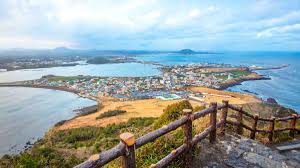昔、
韓国の
済州島(チェジュとう)は
日本人に
とても人気がありました。
Autrefois, lîle de Jeju en Corée était très populaire auprès des Japonais.
2000
年代のはじめ、
外国人観光客の
約40%が
日本人でした。
Au début des années 2000, environ 40 % des touristes étrangers étaient japonais.
、
今は
その様子が
大きく
変わっています。
Cependant, la situation a beaucoup changé aujourdhui.
の
済州島には
中国人観光客が
とても多くなりました。
Récemment, le nombre de touristes chinois visitant lîle de Jeju a considérablement augmenté.
の
お店の
人は「
今は80〜90%が
中国人です」と
話しています。
Le vendeur du marché a dit : « En ce moment, environ 80 à 90 % des vendeurs sont chinois. »
、10
年前は
ほとんど日本人だったと
懐かしむ
声もあります。
De plus, certaines personnes se souviennent quil ny avait presque que des Japonais il y a dix ans.
には
中国語の
看板が
たくさんあり、
まるで中国の
町のようです。
Il y a beaucoup denseignes en chinois dans la rue, et ici, cela ressemble à une ville chinoise.
の
理由は、2010
年ごろから
韓国政府が「
投資移民制度」や「ビザなし
渡航」を
始めたことです。
La raison de ce changement est que, vers 2010, le gouvernement sud-coréen a commencé à introduire un « système de résidence par investissement » et le « tourisme sans visa ».
で
中国からの
観光客や
お金が
増えました。
En conséquence, le nombre de touristes et les fonds en provenance de Chine ont augmenté.
が
増えることは
経済にとって
良いこともありますが、
問題もあります。
Laugmentation du nombre de touristes peut apporter des avantages économiques, mais elle pose également des problèmes.
の
人は「
お客さんの
数だけでなく、
どんなお
客さんかも
大切です」と
言っています。
Le vendeur a dit : « Non seulement le nombre de clients est important, mais aussi le type de clients l’est tout autant. »
、
家や
土地の
値段が
とても高くなり、
住んでいる
人たちには
大きな
問題です。
De plus, les prix des logements et des terrains ont fortement augmenté, ce qui constitue un problème majeur pour les habitants locaux.
が
少ないので、
若い
人は
島を
出て
いくことも
多いです。
Comme il y a peu de travail, de nombreux jeunes doivent quitter lîle.
の
変化は、
他の
観光地でも
起こるかもしれません。
Les changements sur lîle de Jeju pourraient également se produire dans dautres destinations touristiques.
が
世界中の
人に
人気に
なると、
良いことも
悪いことも
あると
動画は
伝えています。
Cette vidéo montre quil y a à la fois des aspects positifs et négatifs lorsque les sites touristiques deviennent célèbres auprès des voyageurs du monde entier.

